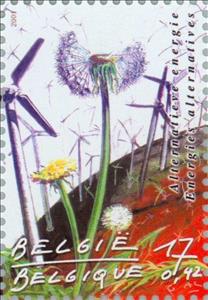Stamp: Millennium (Belgium 2001)
Millennium (Belgium 2001)
01 January (Belgium ) within release Millennium goes into circulation Stamp Millennium face value 17 Belgian franc
| Stamp Millennium in catalogues | |
|---|---|
| Michel: | Mi:BE 3075 |
| Belgium: | Bel:BE 3025 |
Stamp is square format.
Also in the issue Millennium:
- Stamp - Millennium face value 17;
- Stamp - Millennium face value 17;
- Stamp - Millennium face value 17;
- Stamp - Millennium face value 17;
- Stamp - Millennium face value 17;
- Stamp - Millennium face value 17;
- Stamp - Millennium face value 17;
- Stamp - Millennium face value 17;
- Stamp - Millennium face value 17;
- Stamp - Millennium face value 17;
- Stamp - Millennium face value 17;
- Stamp - Millennium face value 17;
- Stamp - Millennium face value 17;
- Stamp - Millennium face value 17;
- Stamp - Millennium face value 17;
- Stamp - Millennium face value 17;
- Stamp - Millennium face value 17;
- Stamp - Millennium face value 17;
- Stamp - Millennium face value 17;
- Stamp - Millennium face value 17;
|
Data entry completed
56%
|
|
|---|---|
| Stamp Millennium in digits | |
| Country: | Belgium |
| Date: | 2001-01-01 |
| Print: | Photogravure |
| Perforation: | comb 11½ |
| Emission: | Commemorative |
| Format: | Stamp |
| Face Value: | 17 Belgian franc |
Stamp Millennium it reflects the thematic directions:
Special Occasions
A millennium (pl. millennia or millenniums) is a period of one thousand years, sometimes called a kiloannum (ka), or kiloyear (ky). Normally, the word is used specifically for periods of a thousand years that begin at the starting point (initial reference point) of the calendar in consideration and at later years that are whole number multiples of a thousand years after the start point. The term can also refer to an interval of time beginning on any date. Millennia sometimes have religious or theological implications (see millenarianism).
In physics, energy (from Ancient Greek ἐνέργεια (enérgeia) 'activity') is the quantitative property that is transferred to a body or to a physical system, recognizable in the performance of work and in the form of heat and light. Energy is a conserved quantity—the law of conservation of energy states that energy can be converted in form, but not created or destroyed. The unit of measurement for energy in the International System of Units (SI) is the joule (J).
A globe is a spherical model of Earth, of some other celestial body, or of the celestial sphere. Globes serve purposes similar to maps, but, unlike maps, they do not distort the surface that they portray except to scale it down. A model globe of Earth is called a terrestrial globe. A model globe of the celestial sphere is called a celestial globe
Environmental protection is the practice of protecting the natural environment by individuals, groups and governments.Its objectives are to conserve natural resources and the existing natural environment and, where it is possible, to repair damage and reverse trends.
Flora is the plant life occurring in a particular region or time, generally the naturally occurring or indigenous—native plant life. The corresponding term for animal life is fauna. Flora, fauna and other forms of life such as fungi are collectively referred to as biota. Sometimes bacteria and fungi are also referred to as flora, as in the terms gut flora or skin flora.





